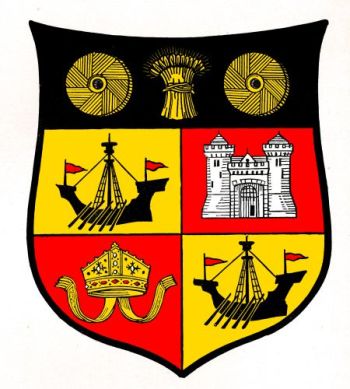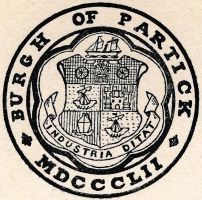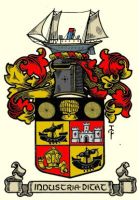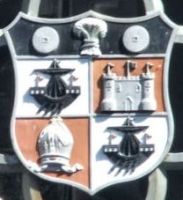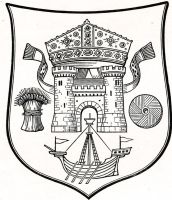Partick: Difference between revisions
Knorrepoes (talk | contribs) No edit summary |
Knorrepoes (talk | contribs) m (Text replacement - "Literature : " to "'''Literature''': ") Tags: Mobile edit Mobile web edit |
||
| (One intermediate revision by the same user not shown) | |||
| Line 31: | Line 31: | ||
This proposal was not accepted by the council. | This proposal was not accepted by the council. | ||
===Image gallery=== | |||
<gallery widths=250px heights=200px perrow=0> | <gallery widths=250px heights=200px perrow=0> | ||
File:partickseal.jpg|alt=Arms (crest) of Partick|Seal of the burgh as used in the 1890s | File:partickseal.jpg|alt=Arms (crest) of Partick|Seal of the burgh as used in the 1890s | ||
| Line 40: | Line 41: | ||
{{media}} | {{media}} | ||
[[Literature]] : Porteous, 1906; Bute et al, 1903; Fox-Davies, 1915 | [[Civic Heraldry Literature - United Kingdom|'''Literature''']]: | ||
Porteous, 1906; Bute et al, 1903; Fox-Davies, 1915 | |||
[[Category:United Kingdom Municipalities P]] | [[Category:United Kingdom Municipalities P]] | ||
[[Category:Scotland]] | [[Category:Scotland]] | ||
Latest revision as of 13:53, 7 January 2024
| Heraldry of the World |
| British heraldry portal Civic heraldry of the United Kingdom |
|
PARTICK
Incorporated into : 1912 Glasgow
Official blazon
Quarterly. First and fourth, or, a lymphad or galley with oars in action sable, flags flying gules; second, gules, a double towered castle argent; third, gules , a bishop's precious mitre proper; on a chief sable a garb between two millstones or.
Crest: A steamboat proper
Motto: INDUSTRIA DITAT (Progress through industry / Industry enriches)
Origin/meaning
The arms were never officially registered.
Partick adopted the General Police Act of 1850 in 1852, and came under the provisions of the Lindsay Act in 1866. Under the Burgh Police Act of 1892 a Common Seal was designed, shown below, featuring the shield above.
The lymphad is a conventional indication of the shipbuilding industry; the steamer symbolises the importance of the Burgh for boiler works in the town at the end of the 19th century.
The castle recalls the fact that the Bishops of Glasgow here possessed a manor-house from a very early period, upon the site of which manor-house it probably was that the so-called castle, the ruins of which remained standing until about 1836 was erected in 1611.
The mitre is in memory of the proprietorship of Partick by the See of Glasgow, to which it was granted by David I in 1136.
The garb and millstones, confined, in the chief sable, to the darkness of the past, are a memorial of the purely rural industries of Partick in the 19th century when it was an agricultural district possessing several mills belonging to its ecclesiastical superior.
In 1903 it was proposed to simplify the arms as follows :
Gules, between a garb on the dexter, a mill-stone on the sinister, and a galley in base, or, a castle double-towered argent, ensigned of a precious mitre proper.
This proposal was not accepted by the council.
Image gallery
The arms on Partick Bridge, Dumbarton Road (source), wrong colours of the field
Contact and Support
Partners:
Your logo here ?
Contact us
© since 1995, Heraldry of the World, Ralf Hartemink 
Index of the site
Literature: Porteous, 1906; Bute et al, 1903; Fox-Davies, 1915


